#How to Fix Red Light on Spectrum Router
Explore tagged Tumblr posts
Text
Learn how to fix a red light on your Spectrum router quickly and easily. Our guide provides step-by-step instructions and helpful tips to help you get back online in no time. Plus, discover how to avoid this issue in the future.
0 notes
Text
Understand Spectrum Modem Lights | Internet Modem Light Label (Aug 22).
Understand Spectrum Modem Lights | Internet Modem Light Label (Aug 22).
If you are searching questions around spectrum modem lights, and want to understand the meaning of every positioning. Then, you jumped to the right page. Well modem and router combo come with different colors of notification lights or you can say indicating lights. And all the light has its own meaning. Depending it is on, blinking, or off. Generally, charter modem lights have mainly these…
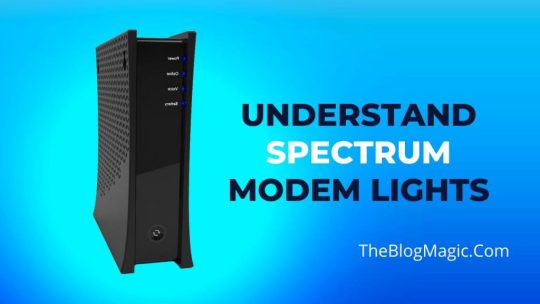
View On WordPress
#ethernet lights meaning#Fix Error#How to#Router.#Spectrum#spectrum modem online light flashing#spectrum modem red light#spectrum online white#spectrum router blinking blue#spectrum router blinking red#Wi-Fi routers.
0 notes
Link
Learn how to troubleshoot and fix the red light on your Spectrum router with our step-by-step guide. Discover common causes of the issue and easy solutions to get your internet up and running again.
1 note
·
View note
Link
0 notes
Text
Govee Lyra Review: Time to Upgrade Your Floor Lamp?
Govee Lyra
9.00 / 10
Read Reviews
Read More Reviews
Read More Reviews
Read More Reviews
Read More Reviews
Read More Reviews
Read More Reviews
Read More Reviews
See on amazon
The Govee Lyra is a stunning freestanding accent light for any part of your home, capable of gorgeous dynamic multicolor displays that'll be sure to wow guests. However, voice control is limited and the app could do with some streamlining. If you just want some flashy lights, Govee RGBIC LED strips offer better value for money with the same feature set.
Key Features
RGBIC LEDs
58-inches tall
Aluminum profiling
Opaque silicon LED diffuser
Specifications
Brand: Govee
Integrations: Alexa, Google Home
Protocol: Wi-Fi, Bluetooth
Hub Required: No
Music Reactive: Yes
Multicolor Capable: Yes
Pros
Dynamic, multicolor scenes are incredible
Music mode works well from the built-in microphone
Bluetooth app control as well as Wi-Fi means you can take it elsewhere for instant effect lighting
Cons
The app has a bewildering number of color options
Limited voice assistant control
Can't save scenes to the remote
Doesn't support Apple HomeKit
Buy This Product
Govee Lyra amazon
Shop
// Bottom
Govee leads the way in affordable smart home lighting, but until now it's mostly been focussed on DIY options like LED strips. The Govee Lyra is its first freestanding floor lamp, and the sleek design means it wouldn't look out of place in any modern home. Is it time to upgrade your floor lamp?
youtube
Read on to find out more about the Govee Lyra floor lamp, how it compares to other smart lighting products, and whether it's right for your smart home.
To celebrate the launch, Govee is offering a Lyra floor lamp to one lucky reader: just enter your details in the giveaway widget at the end of this review to be in with a chance of winning. The competition closes one month later, and the winner will be notified by email.
What is "RGBIC"?
The Govee Lyra uses RGBIC technology, which is another term for Neopixels, or pixel LEDs. The "RGB" part refers to the LEDs being capable of color mixing with a full gamut of Red, Green, and Blue. "IC" is short for Integrated Circuit, referencing the fact that each LED has its own control circuit, hence each can display a different color.
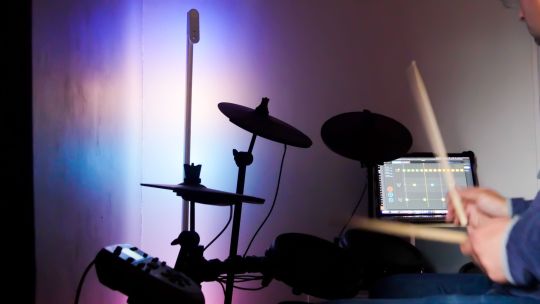
Most RGB strips you'll find for sale can display only a single color at the same time. The Govee Lyra (and other Govee RGBIC products) can display multiple colors simultaneously, resulting in gorgeous rainbows and aurora patterns.
Govee Lyra Hardware
The Lyra arrives in a relatively compact box, which of course means there's a fair bit of construction before you can start using the lamp. Inside the box you'll find:
Heavy base with attached control box
Three milled aluminum profile sections
Connecting brackets and screws
Silicone-encased LED strips
Power cable
Remote control
Optional remote control holder
Fixing it all together is quite an involved process, but took me no longer than half an hour, and a screwdriver is included. However, you should follow the instructions closely, as one of the aluminum profile sections is not like the others, and has a different set of screw holes to attach to the base. Once the main tower has been constructed, you should plug in the LED strip, then carefully squeeze it into the profiling.
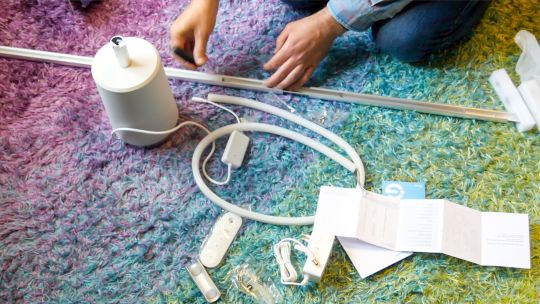
The optional remote holder snaps onto the Lyra in any position you choose. The remote control itself is magnetic at the rear, so it can be attached and pulled off easily. It's optional though, so feel free to not use it if you feel it ruins the overall aesthetic.
Design
The Govee Lyra stands at 58-inches (147cm), though the LED strip is only 47-inches (120cm) of that. To ensure it stands upright, you'll find a heavy but slimline base, with the footprint of the Lyra only a 6-inch diameter, meaning it should fit neatly beside any bulky furniture.
That said, I'm not a fan of the white plastic around the base, and would have preferred a wider, flatter, brushed aluminum look to match the profiling sections. It also seems like a wasted opportunity that the power brick and electronics are not built into the base.

Ultimately these are small complaints when the base and cable are likely to be hidden behind some furniture, but it does mean you may not want to put the Lyra in an empty corner of the living room. At 58-inches tall, I also found myself wanting a small table to put it on, rather than the actual floor. It feels just ever so slightly too short, and just one extra section would have made all the difference. To me, a floor lamp should stand about as tall as I am, or a little less.
The Govee Lyra looks best when placed about a foot back from and facing a wall, allowing a wide area of light to be reflected back.
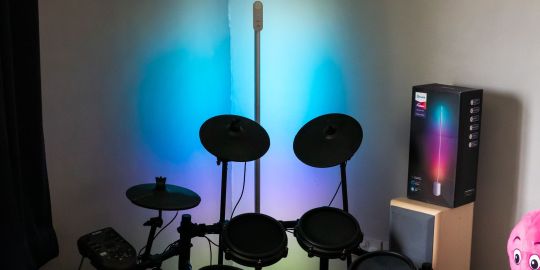
Of course, if you'd rather the harsher look of the striplight itself, there's no reason you can't do that, but you'll get a much less impressive reflection.

Controlling the Govee Lyra
There's a number of ways you can interact with and control the Lyra:
Physical remote control
Govee Home app
Voice assistant
Remote Control
The remote has buttons for power, built-in music reactive modes, one color selection, brightness, and warm or cool light modes.
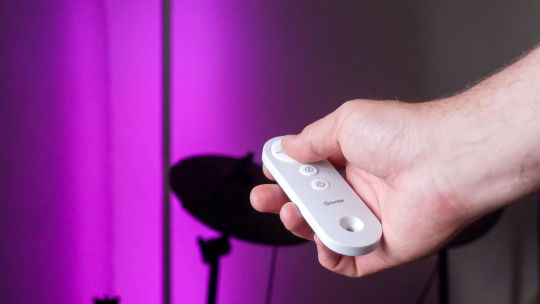
However, notably absent is the ability to select multicolor scenes that aren't music reactive. To initiate those–which are arguably one of the biggest differentiating points of the Govee Lyra–you'll need to use the app.
Govee Home App
Thankfully, getting set up with the Govee Home app is easy, and I was able to reliably add the device within minutes. Operating over Bluetooth or Wi-Fi, just choose the Lyra from the indoor lighting tab, provide your network access details, and name the device. The device will automatically use Bluetooth if you're within range, but otherwise, it all works fine over Wi-Fi.
The app is relatively easy to use to select premade scenes or more music reactive modes, but creating your own custom animations can get more complex thanks to confusing color options. Having trouble deciding on some colors to use? The "Recommended color schemes" sounds like it would be an easy to choose list, but instead requires you to select no less than an initial style, a basic color, a scene, and a color matching method; none of which are really explained.
Image Gallery (3 Images)
Expand
Expand
Expand
Close
Image 1 of 3
Image 2 of 3
Image 3 of 3
The "Effects Lab", which features at the top of the list, is particularly bizarre. It appears to be a vast selection of color palettes created from photographs, from which you can then choose a single color and apply it to the lamp, or save the color to your personal favorites. To me, an Effects Lab is somewhere you can go and choose, say a fireworks animation, or log fire. Instead, you'll find those sort of animations down in Mode -> Scene.
The app also includes the options to share your scenes, though it's not clear where to access others' creations.
In short, there's an awful lot of choice in the app, and the basics are easy to get a hang of, but there's just too much complexity when it comes to customization. Govee could do with taking a leaf out of the Nanoleaf playbook when it comes to custom scene creation and community sharing.
Voice Assistants
The last option is to use either Google Assistant or Amazon Alexa. Apple HomeKit and Siri are not supported. The voice assistant control is also limited to power, brightness, and color; you can't select multicolor scenes or music reactive modes.
In my testing, I found the remote control and app to be the most useful. Despite not being able to export animated scenes to the remote control or voice assistants, the Lyra does remember the last scene used, so you can at least resume your favorite (assuming you don't turn it off at the plug). The lack of HomeKit support might be a dealbreaker for you though.
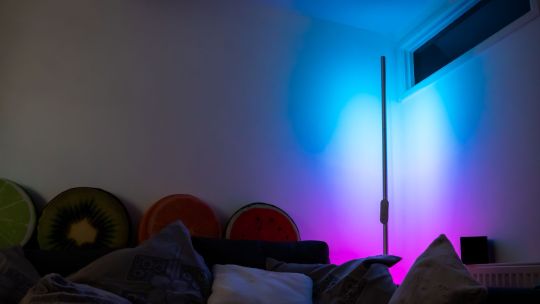
Which Smart Lighting to Choose?
Govee is our favorite when it comes to great value smart lighting, but it's not the only option. Let's take a look at some other ecosystems to compare.
Govee vs Hue
The Govee and Hue smart lighting ecosystems crossover in many places, yet differ immensely. Both sell smart color bulbs, LED strips, and standalone lighting fixtures. Govee even has its own version of the Ambilight technology, which uses a camera to "watch" your screen and dynamically adjust the lighting color.
The main difference is price: Philips Hue devices cost two to five times as much as their Govee equivalent. Consider the Govee smart LED strips, around $20 for five meters; vs the Hue equivalent Lightstrip at $60 for three meters! Philips even has a smart floor lamp, but it's twice the price, and only outputs a single color. There's just no competition here.
The Hue system requires its own smart hub, creating a separate Zigbee mesh network. This has the benefit of not cluttering up your Wi-Fi if you have lots of fixtures, and means you can install lighting in places your Wi-Fi might not be able to reach. On the other hand, it's a high added cost if you only have a few smart lights, and modern Wi-Fi routers should easily handle some smart lighting. On top of that, Zigbee transmits over the 2.4Ghz spectrum, the same as 2.4Ghz Wi-Fi. S you (or your neighbors) may find your Wi-Fi experience suffers.
Govee smart products use either Wi-Fi or Bluetooth. If you have good Wi-Fi coverage and a modern router, you should have no problem. Though rarely used outside of initial setup, Bluetooth is a welcome addition for me. If I'm running a small event somewhere, such as a haunted house, I can pick up some Govee LED strips and set them up as effect lighting or a custom music reactive mode using only my smartphone, without needing to worry about programming in new Wi-Fi access details.
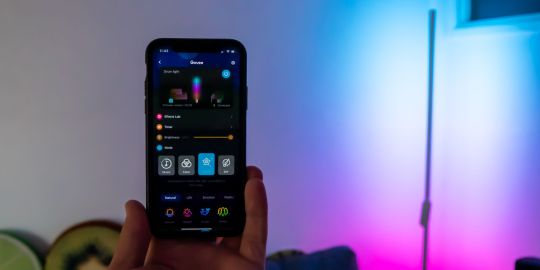
Govee vs Nanoleaf
Although the Nanoleaf smart lighting panels are a vastly different product (more akin to wall art installations), they are generally going to be considered for the same purpose as the Lyra: lighting up a wall or corner of your home.
Both Nanoleaf Panels and Govee Lyra share a lot of similarities:
Connect to Wi-Fi, and have voice assistant integration
Capable of displaying more than one color simultaneously
Offer music reactive modes
Offer dynamic scenes, such as a rainbow or aurora
Have a comprehensive mobile app with custom design modes
Have physical control buttons, either on a remote or on the device itself
So where do they differ? Nanoleaf panels are infinitely more customizable, and expandable. The app even helps you to design a shape to place them on your wall. Nanoleaf panels are also compatible with Apple HomeKit, and voice assistant integration is generally more developed, with individual scenes exported.
Of course, Nanoleaf panels are more expensive: two to three times as much as the Govee Lyra for a basic 9-panel music reactive starter kit. In my experience, the Wi-Fi control is lot less reliable too, and I frequently have to do a hard reset to get them responsive again.
Should You Buy the Govee Lyra?
If you want a stylish, minimalistic floor lamp, capable of stunning multicolor dynamic and music reactive displays, along with plenty of customizable options and app control, the Govee Lyra is well worth a look. It's certainly the fanciest floor lamp we've ever seen, perfect for everything from impromptu living room raves to subdued romantic nights in.
It'll blend into the background when not in use, and take center-stage when needed. It's gorgeous, customizable, and has a physical remote control. You'll need the app for the more exciting scenes though, and voice assistant integration is limited.
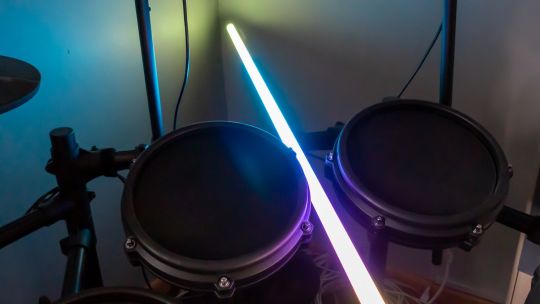
But while we think the Lyra is a great-looking smart floor lamp, it's let down only by the fact that other Govee products offer even better value. Much of the cost goes on the aluminum profiling, and there's only 47-inches worth of actual LEDs for the RRP of $150. For the same price, you could buy almost 100ft of Govee RGBIC LED strips, which would have the exact same features, and produce enough light to blind you. Clearly, a big chunk of the price is on the presentation—metal isn't cheap. If you just want some smart effect lighting, and don't mind sticking the LED strips to an existing bit of furniture, then some basic LED strips are a better choice.
Govee Lyra Review: Time to Upgrade Your Floor Lamp? published first on http://droneseco.tumblr.com/
0 notes
Text
Spectrum Router Login Guide

Spectrum Router Login Guide
If you are fed up with your old and complex router and slow internet speed, bring home your Spectrum Router. It offers you high internet speed and larger coverage. You will be able to enjoy your favorite HD video streams and online games without any lag. The best thing about your Spectrum router is that you can stream high bandwidth activities on multiple devices without any lagging issues. With smart technology, you can easily do the spectrum router login and set up within only a few minutes. Here, we will discuss the login and setup process of your router and how to resolve various login issues.
Spectrum Router: Introduction and Features
If you are in search of a high-performing router, Spectrum is the one for you. It comes with the latest features and advanced technologies to make your experience better. Let’s check out some of the best features of your router.
• Quality of Services:Your router prioritizes the traffic to make it easier to stream your videos.
• Parental control:You can limit access to internet traffic and make it safe to browse for your children.
• Guest Wi-Fi:It uses the SSID for guests to access your wireless network and password.
• Easy setup:Your router comes with smart technology that makes it easy to do the setup and login. You can easily access your device.
• Traffic Metering:It monitors the volume of the internet traffic and sets limits to the traffic volume with the live update.
• Universal: You can use your router with any modem or device. It is compatible with all devices.
Easy Steps for Spectrum Router Login
You need to do the Spectrum charter login to get high performance and better access. See the instruction below for that.
1. First of all, you need to connect your computer to your home network. And then connect it to your router using the Ethernet cable.
2. On your computer, you have to open a browser and enter http://192.168.0.1 in the address bar and click enter.
3. Now, you will see the charter communications router login page. There you have to enter the spectrum default router logincredentials
4. You have to enter the username as admin and password as password and click on the Login button.
5. Now, you are all done with thespectrum internet login process.
Guided instructions for the Spectrum router setup
Trying to do the Spectrum setup, Do it easily with the steps given below.
1. To get started with the setup process, you need to connect your modem to the router using the Ethernet cable.
2. Then, connect your wireless device to the router and open the Wi-Fi connections.
3. You have to select the SSID name and enter the password.
4. To activate your modem, you have to go to activate.spectrum.net on your computer.
5. There, you have to follow the instructions on the screen and fill out the details.
6. With that, you will be all done with the setup process.
Access your Spectrum mobile account
If you want to make it easy to use your router, you can access the Spectrum mobile. For that, see the steps given below.
1. If you are using the id for the first time, you have to keep your device off first.
2. Then, you have to insert the spectrum mobile SIM card and visit SpectrumMobile.com/activate.
3. Now, sign in using your Spectrum username and password.
4. Go to the Activation Dashboard and select Get a New Phone Number or Keep My Number.
5. Now, click on the start activation and follow the steps on your screen.
6. You can now turn on your device and connect it to your Wi-Fi network.
Troubleshoot the Spectrum Router issues
If you are having login issues such as Spectrum mobile login not working, or you are wondering Why can't I log into my spectrum router?How do I fix my WiFi spectrum router?How do I change the settings on my spectrum router?Why is my router blinking red spectrum? There is nothing to be worried about. You can do it all with only a few simple steps. Here we will stick to the issue that your Spectrum mobile login not working. Check out the easy solutions for that.
Spectrum mobile login not working
If you are facing issues with your spectrum mobile login, you can resolve them with the troubleshooting steps given below.
• First, you need to check if you have connected your devices properly using the Ethernet cable.
• Make sure the web address you are entering is correct or there is no problem with the login details.
• Check if your browser is not creating any issues.
• You can restart your devices. That might fix the issue.
How do I reset my spectrum router?
If you are unable to resolve the issues with your device with the troubleshooting methods, you can reset your device. If you are wondering How do I reset my spectrum router? Here’s the answer to that.
• You need to find the reset button on your device.
• Press it for a few seconds using a small pin and then release it whenspectrum router lights blinkingbegins.
• You are done with the setup process. You can configure your device again.
How do I use the WPS button on my spectrum router?
You can use the WPS button on yourcisco dpc3216 login spectrum device to do the setup. See the steps below.
• You have to push the WPS button on your router for about 3 seconds andthen release it.
• You will see the options visible in the network menu settings.
• With that, you are all done.
Conclusion
With this article, you will be able to do the spectrum router login with some simple steps. If you have any queries or want to know more about your device, you can get in touch with us by calling us on our toll-free number. We will be more than glad to help you out.
0 notes
Link
Dirty Electricity — Stealth Trigger of Disease Epidemics and Lowered Life Expectancy Dr. Mercola By Dr. Mercola Did you know that a significant percentage of the diseases we now face is related to an artifact of electricity? In this interview, Dr. Sam Milham, author of ”Dirty Electricity: Electrification and the Diseases of Civilization,” explains the health hazards of dirty electricity or electromagnetic interference (EMI). Milham is a physician and an epidemiologist, and has spent decades (he’s now 85 years old) doing pioneering research in this field. In his book, he details the extensive journey he took to uncover the link between dirty electricity and human disease. In a nutshell, dirty electricity, or more accurately stated, EMI, impacts your biology, specifically your mitochondrial function, which we’ve now come to appreciate is at the heart of virtually all chronic disease. What Is Dirty Electricity? Sunlight is a natural or native form of electromagnetic frequency (EMF). There are also four basic non-native or artificial EMF exposures: magnetic, artificial light, electrical and microwave (which includes not only your microwave oven but also cellphones, routers and portable phones). Dirty electricity refers to the electrical component of this EMF spectrum. A more precise term is electromagnetic interference or EMI. “Dirty” is more of a descriptive layman’s term. But what exactly is EMI and how is it generated? Milham explains: “The electric grid began with Edison in 1892 at the Pearl Street Generating Station. It turns out that from the very second he started generating electricity, he was making dirty electricity. The way I know that is because if you read his publications, he had a big problem with his original generators … They had brush arcing. The way they made electricity was by spinning magnets that had brushes to pick up their contact points. All electric motors have brushes. Generators have them. They’re made out of graphite … Arcing and sparking makes dirty electricity, which are really high-frequency electric transients. They come and go. They’re spikey. They have very short latency times. From the outset of the grid, we’ve been exposed to this. It’s not the 60-cycle stuff. We’re talking about frequencies up in the kilohertz and higher; thousands of cycles per second.” EMI Microwaves Travel Far and Wide There are also microwaves, and this is not just your microwave oven, but your portable phone, cellphone and cellphone towers. “All transmitters, AM, frequency modulation (FM) and especially cell towers [produce microwaves]. Your cellphone works because there’s a transmitter out there that transmits to you. They all run on DC. Every cell tower in the world has a huge inverter in it to make the DC to run the transmitter, and also to charge the backup batteries. They make dirty electricity by the ton. Lots of schools have cell towers on campus. What they’re doing is they’re bathing the kids [with EMI]. It gets back into the wires; the ground (lot)wires and power wires that service it. The grid becomes an antenna for all this dirty electricity. It extends miles downstream … [A Brazilian study] looked at deaths from cancer [and] distance of residence from the base of the cell tower. They got effects out to 500 meters. That’s 1,500 feet. I’ll tell you, the cell tower can’t talk that far. It’s the dirty electricity — the EMI in the grid, in the wires running into your house, through the ground and through your power cords — that’s doing it.” Dirty Electricity Is Biologically Active A classic example of EMI is AM radio wave transmission interruption, as demonstrated in Milham’s video above. But why exactly should we be concerned about EMI in our homes? “Over the 50 years I’ve been doing this, it’s become super clear that EMI or dirty electricity is very biologically active. I wrote the book to warn the population because nobody seemed to pay attention to it. This is the major cause of all the so-called diseases of civilization,”1Milham says. I myself am becoming quite passionate about this issue. I’ve known about dirty electricity or EMI for nearly two decades, but I never fully appreciated the impact it has until I read Milham’s book. Then, the connections suddenly became apparent to me. For the last year, I’ve been diving deep into the scientific literature of mitochondrial function, and it appears this is how EMI affects your health. In other words, it likely increases mitochondrial free radical damage and contributes to mitochondrial dysfunction. Certainly, other variables contribute to disease as well, such as the processing of food, unbalanced nutrient ratios, pesticide contamination and so on. Still, the impact of EMI may be foolhardy to overlook. All Solar Panels Generate Dirty Electricity On a side note, many who use solar panels (photovoltaic panels) are completely unaware of the fact that they are a source of dirty electricity. I’ve had 15 kilowatt solar panels on my home for the last five years. Photovoltaic panels generate direct current (DC), which is essentially unusable in most homes. In order to use the DC current the solar panels generate, you need to use an inverter that converts it to alternating current (AC). The problem is, the inverter used to generate AC is a phenomenal source of dirty electricity. I remediated mine and radically decreased the EMI generated when the inverters are on during the day. Large, commercial solar arrays have a similar problem. They use inverters — sometimes thousands of them if they’re really big arrays — and they all generate EMI or dirty electricity. “If your utility has an appreciable wind or solar component, it is, by definition, giving you dirty electricity,” Milham notes. “[W]hen I first discovered this business, I went online; I studied commercial sources of photovoltaic inverters … I found this statement … [which] said that all photovoltaic inverters create amplitude modulation (AM) radio interference. What does that tell you? It says it’s all dirty.” This EMI connects or affects your biology when it’s on a circuit or in the earth. For example, if you have a solar panel in your house, not all circuits in your house will be hooked up to it. The only circuits affected by EMI will be the ones hooked up to the solar panel inverter. The EMI gets into the ground and can also affect your neighbors. Chronic EMI Exposure Raises Your Cancer Risk Once EMI is generated, how far away must you be from the wire in question in order to avoid biological interference? According to Milham, the distance can be quite significant. In many cases, entire areas of ground can be a source of EMI, raising the current in your body. “About three years ago, [the late professor] Martin H. Graham … and Dave Stetzer, who pioneered and studied this field and trained me … sent me an off-the-shelf fluke multimeter, which measures volts, amps and ohms. He showed me how to use it to measure current in my body. That’s been a mindblower … I put an electrocardiogram (EKG) patch on my chest for one lead … and the other [fluke multimeter lead] goes to an electrical outlet ground … It then measures the current in my body … The meter comes with everything you need. All you’ve got to do is take a 12-gauge wire and put a three-prong plug on it, where you only contact the round plug. That’s attached to your black electrode. That’s for the ground. The red one goes to your EKG patch on your chest (or to your mouth). I find that just walking on the pavement in an area, I could get very, very high, probably carcinogenic fields of current in my body. We’re talking millivolts [and] microamps … The National Institutes of Environmental Health Sciences (NIEHS) studied this years ago. They concluded that 18 microamps is sufficient to put enough voltage in your body to give you cancer with chronic exposure. You want to keep [your body current] under 18 microamps. The higher it is, the worse it is … I find 200 to 300 microamps in lots of places, just standing on the floor … One of my favorite places is a local farmers market here. Last year, I was horrified to find out that just walking or standing in that place, I was putting 200 microamps of current into my body2 … I was sitting at a Hewlett-Packard laptop and was measuring myself. I just touched the case of the laptop and found it was putting 80 microamps into my body. I finally got rid of it by putting a USB to an outlet ground. That fixes it.” Beware of Fluorescent and LED Lights Milham also discovered that almost all non-incandescent lighting puts high current into your body, directly from the light. This includes fluorescents, compact fluorescent lights (CFLs) and light emitting diodes (LED) light bulbs. Dr. Alexander Wunsch, a world class expert on photobiology, details many of the health hazards associated with LED lights, but the dirty electricity component is yet another reason to avoid these types of light bulbs in your home and office space. As noted by Milham: “This explains a lot. I started doing occupational mortality [investigations] 30 years ago … I was puzzled as to why the highest cancer rates [occur in] teachers, professors and office workers. Why is melanoma more common in people who work indoors than outdoors? Why is it more common in teachers and professors than in lifeguards or farmers? Why do you get it on parts of your body that never see the sun? It’s due to [nonnative artificial] EMF, as I’ve been measuring in schools and colleges. There’s just no place to hide.” In the 1950s, photobiologist John Ott studied children in a Florida school who had attention deficit hyperactivity disorder. He believed these kinds of behavioral problems were associated with the fluorescent lighting, and was able to improve the children’s condition by placing an EMF-blocking wire mesh screen in front of the lights that was then grounded. This and other findings are discussed in Ott’s book, “Health and Light: The Effects of Natural and Artificial Light on Man and Other Living Things.” Male Breast Cancer — A Sentinel for EMI Exposure Interestingly, Milham’s work suggests cancers are frequency-specific,3 meaning certain frequencies cause specific cancers. He also notes that male breast cancer is a sentinel for EMI exposure,4 just like mesothelioma is a sentinel for asbestos exposure. Unfortunately, few are willing to take the issue seriously. “In the second edition of my book I comment (willfully) that there’s an epidemic of male breast cancer in Camp Lejeune in the Marine Corps. I wrote to them and said, ‘Look at these 15 studies that link EMF to [male breast cancer].’ They were saying it was due to the drinking water contamination. There’s no way. It’s due to EMF for sure. They just ignored me.” Milham was also involved in an investigation5 at La Quinta Middle School in Palm Springs. Teachers were convinced an environmental problem was at fault for an epidemic of cancer among the staff. In all, 18 teachers at the school had developed cancer. Other schools in the system had at most two or three cases. The superintendent of the school hired an expert from the local tumor registry (cancer institute), who informed the teachers that their cancers were due to sun exposure. Milham initially spent months trying to contact the school, to no avail. The superintendent told him they were satisfied with the answers they’d received. Eventually, at the request of the teachers, he was allowed into the school for two nights to investigate, yet shortly thereafter, he was accused of criminal trespass by the school district. They simply did not want him to get involved. The state teacher’s association stonewalled him as well. “I tried to do another school that had a cell tower on campus and an epidemic of mostly breast cancer in the staff. Once again, they hired a University of California professor to come to a school board meeting and try to shoot down my [research]. They wouldn’t cooperate, so what are you going to do? You can lead these people to water but you can’t make them drink.” Historical Data Reveal Public Health Impact of Electrification Clearly, there’s a strong negative incentive against this type of information. What intrigued me is that when Milham did his initial analysis and historical review,6 he found a strong correlation between electrification and mortality from cancer, including female breast cancer and childhood leukemia7 — and this data dates back to 1900! By the turn of the century, most big cities in the world had electricity, while rural areas didn’t catch up until the mid-‘50s. So, for half a century there were two large United States populations covered by a good vital record system of deaths and births. One population group was exposed to electricity and the other wasn’t. When you compare these two groups, you discover some truly amazing differences in vital statistics. “At the turn of the century, if you lived in New York City or most of the other cities in the country, your average life expectancy was low-50s. If you were Amish and didn’t use electricity or if you lived in rural Mississippi or rural New York State, your longevity was in the 70s. Fast forward to the 1930s … the urban cancer [mortality] was 50 to 80 percent higher than the rural cancer mortality. That’s enough to blow your mind. It’s internally consistent.” Today, the risks are greater than ever before, thanks to ground currents. The electric grid in the U.S. is called a grounded Wye grid, designed for protection against lighting. The neutral center taps of their transformers are connected to the earth by a wire. In the U.S. about 80 percent of the current delivered to loads like motors and lights returns to the substation via the earth. Dairy farmers were among the first to sound the alarm that something was wrong. In the 1970s, they noticed cows were dying, weren’t producing milk and had trouble reproducing. “This big old BACI (before-after control-impact) is a wonderful canary in the coal mine for EMF,” Milham notes. Stetzer, Graham and others did a study in which they identified the parts of the EMF spectrum that impact milk production in cows. Interestingly, their findings reveal milk production is affected by certain harmonics at multiples of 60 Hz. At these intervals, frequencies have a harmful effect on the cows. Chances are, the same applies to human beings. Biological Mechanisms of EMI As mentioned, dirty electricity or EMI are high-frequency electric transients and harmonics that come and go. These aberrant peaks in frequency are emitted quite a distance, typically greater than 10 feet. This means that if you’re within range, these frequencies can resonate with your body, causing some biological effect. One suggested mechanism of harm is related to the production of a reactive nitrogen species (RNS) called perioxynitrate. Evidence also suggests it can affect mitochondrial function, which I believe is a major mechanism of harm. More generally speaking, EMI acts as a biological stressor. In one of Milham’s studies, he showed that by cleaning up the electrical environment, they were able to reduce the production of stress hormones. He’s also shown that by filtering dirty electricity from a library, the levels of neurotransmitters in people spending time in the library were beneficially altered. Milham also cites a study by two German researchers, who were able to demonstrate that the installation of a cellphone tower in a previously pristine valley produced long-term changes in a wide variety of measurable hormones, including stress hormones. More Information If you’re intrigued by this information and want to learn more, be sure to pick up a copy of ”Dirty Electricity: Electrification and the Diseases of Civilization.” You can also find more information, including copies of Milham’s research papers and scientific reports on his website, SamMilham.com. I’ve also provided a number of those papers as supporting references throughout this article. From my perspective, there’s no doubt dirty electricity is triggering and/or exacerbating chronic disease, and if you care about your health and longevity, I urge you to face this information head on, disturbing and discouraging as it may be. While it may be impossible to avoid all EMI exposure, there are ways to limit and minimize your exposure inside your home and, potentially, at work. Doing so may go a long way toward protecting your and your family’s health over the long term.
0 notes
Text
How to Fix Spectrum Modem Red Light in Just a Few Steps : Must Read
0 notes
Text
How To Fix US/DS Blinking Light On Arris Modem? (5 Easy Solutions)

The continuous US/DS blinking light on arris modem device can be annoying. It can be a nightmare for those who suffer from OCD. However, it is not only an annoyance to your eyes, but also to your entire online experience. It's similar to your car's check engine light. If it is blinking, you know something is wrong and it is in your best interest to have it checked out. The lights on a modem are the same way. Each one serves a purpose, and excessive blinking may indicate a problem with internet connectivity. It will save you a world of pain if you know exactly what to look for, why the light is blinking, and what you can do to fix it. For those who are less tech-savvy, figuring out your US DS light may appear difficult, but don't worry. Finding the right help is never out of reach for Spectrum users. With a large community of active users spread across 40 states, you'll be able to find detailed solutions to all of your problems online. Methods to Fix US/DS Blinking on Arris Modem HOW TO TROUBLESHOOT US/DS BLINKING LIGHT ON ARRIS MODEM? We, too, have attempted to break the problem down into simple, understandable chunks so that you can diagnose and resolve it at home in minutes without having to call customer service. So, without further ado, let us begin. When the US/DS light on your Arris modem or router blinks, it can be concerning. Most of the time, it will only blink for a few minutes. However, it may blink for extended periods of time with no sign of stopping. Worst of all, it may be accompanied by a loss of internet connection. You should not be concerned if you are experiencing this issue. There are several approaches you can take to identify and resolve the issue with your Arris modem. However, before we get to the solutions, let's take a look at what's causing the problem. WHAT IS THE US/DS LIGHT FOR? If you didn't already know, the US/DS abbreviation stands for Upstream and Downstream. It is normal for the US/DS light to blink when a modem is establishing a connection. However, once the connection is established, it stops blinking and simply remains turned on. When this occurs, it indicates that the internet is operational and that the device can send and receive data. However, if the light continues to blink, you know there is a problem. So, what exactly is the issue? Continue reading to find out. WHY THE US DS BLINKING ON YOUR MODEM There are several possible explanations for why the US/DS light is flashing. If the blinking occurs at one-second intervals, you can safely assume that the signal you're receiving is of poor quality or non-existent. Here are a few more major reasons why your light might be blinking: - There could be a scheduled maintenance outage in your area, and you aren't receiving any signals, which is why the light is blinking. On planned outages, the provider's website is usually updated, so you might want to check it out. - The coaxial cable has either been severed or is loose. - The signal from the cable is weak. - Your modem, router, or both are broken. Power fluctuations or outages can sometimes damage a modem and reduce its capabilities. This could be the reason why your devices aren't working as well as they used to. - Your device is updating, and the blinking indicates that the firmware download is in progress. Wait ten minutes, and the light will soon return to normal. - Splitter has been damaged. A Splitter is a useful device that divides your incoming internet connection between your phone, internet, and TV devices. You may have a problem if any part of it is not working properly. Because of this, the US/DS light on your modem may be blinking. Troubleshooting US/DS light blinking on Arris modem SUGGESTED POSTS: - How To Fix The Yellow Light On Verizon Router? (3 Easy Ways) - How To Fix Spectrum Router Red Light? See More - How to Fix Xfinity Router Blinking White? (6 Easy Solutions) HOW TO FIX THEM? These are just a few of the reasons why your device's US/DS light may be blinking. If you've correctly identified the root cause of the problem, you're almost there. After all, isn't identifying the problem half the battle? With that said, let's look at how you can get your modem working properly again. 1. Check for a Service Outage If there is a service outage in your area, the US/DS light will undoubtedly begin to blink because the signals will be very weak, or you may not have any connection at all. To confirm if an outage is indeed disrupting service and causing the US/DS light to blink, call Spectrum internet and ask a customer service representative if the provider is currently performing maintenance or the like. You can also check their official website for the same information, as they frequently update it. We'd even advise you to check your Spectrum mail. They may have also sent you a notification about it. 2. Check the Connections Loose connections are a real danger, especially because they can go wrong so easily. To be safe, go around and double-check that both ends of the coaxial cable are tight. If they aren't, hand-tighten them. We also recommend that you disconnect and reconnect the cable to ensure that everything is working properly. 3. Restart the Modem The first step is straightforward. Restart the device that is causing the issue. Don't underestimate the power of a single 'off' button to solve half of the world's problems. With that said, unplug your modem from its power source and wait a few minutes for it to rest. Then, on the device, press the 'Power' button, hold it, and reconnect it to a power source. That's it! Machines can overheat and malfunction, so this should allow it to cool down and get back on track. 4. Test Out the Splitter If resetting the modem isn't enough and you're still having problems, you should check to see if the splitter you're using is defective. Simply disconnect the cable from the splitter and use it to connect the modem directly to it. If the new connection works properly and does not cause your US/DS light to blink, it is likely that your splitter is faulty. In this case, we recommend that you replace the splitter. 5. Call Customer Service If all else fails, you may require the assistance of experts. You're in luck because they're only a phone call away. Simply dial 1-855-423-0918 to reach Spectrum customer service and request technical assistance. They will connect you to a trained professional who will be able to answer all of your questions and resolve any issues you may have. Spectrum is available at all hours of the day and night and will be more than happy to get your internet service up and running smoothly. Why Is Arris Modem DS Light Blinking? CONCLUSION Isn't it clear that it's not as complicated as it appears? You don't need to be an expert in computer science to solve this problem. Simply follow the steps outlined above to troubleshoot the issue, and the rest is easy. And, if you get stuck at any point, Spectrum customer service is only a phone call away. The constant blinking on your modem can be alarming, and it can almost tell you that you're going to have a bad internet day. But that shouldn't be the case. You should be able to solve the problem and stabilize the US/DS light on your Arris modem using the troubleshooting ideas listed above. If none of the above methods work, contact customer service for assistance in resolving the problem or for a replacement modem. If you are having other problems, we have a comprehensive Arris modem troubleshooting guide for you. Frequently Asked Questions Why is my Arris modem DS light blinking?Examine for Power Outages. Because the Downstream (DS) is the data sent from the ISP to the customer, any outage on the service provider's end can cause the orange light in your Arris modem to blink. If there is a power outage, the downstream data flow is interrupted, and the Arris modem displays an orange light indicator.What does US DS stand for?Upstream and downstream are denoted by the abbreviation US/DS. This light will begin blinking while your router is still connecting, but will stop and become solid once the connection has been established. The solid light indicates a successful connection, which means the device can now receive and send data.How do you reset the router?To turn off your router, press the power button or unplug the power cord. Wait 30 seconds before turning it back on or plugging it back into an electrical outlet. Keep your router plugged in and turned on at all times so that your TV can function properly. It can only be turned off by rebooting.What does DS on a wifi router stand for?In case you didn't know, US is an abbreviation for "Upstream" and DS is an abbreviation for "Downstream." When the router establishes a connection, the US/DS light will begin to blink, but it will stop blinking and turn solid once the connection is established.Why is my Xfinity router WIFI light blinking?A solid white light on your Xfinity router normally indicates that it is connected and that the internet connection is stable. If it's blinking, it could mean that the router is having trouble connecting to the internet or that your service hasn't been activated yet. Read the full article
0 notes